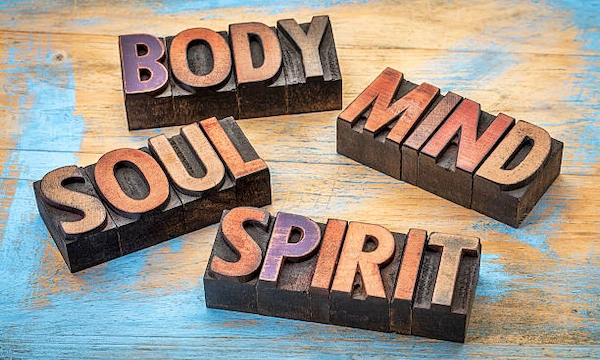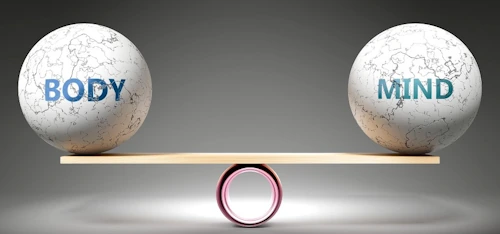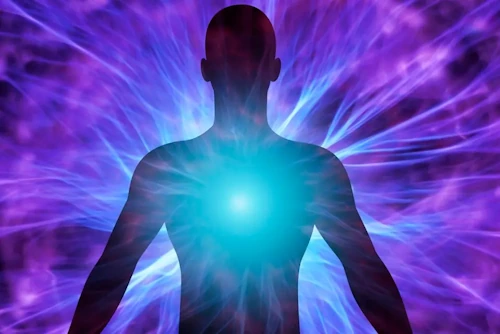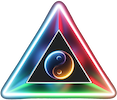
Understanding Our Multidimensional Nature
We are not merely physical beings navigating a material world. The human existence unfolds across multiple dimensions—the physical body, the analytical mind, the emotional soul, and the transcendent spirit. These four pillars of our being intertwine in an elaborate cosmic dance, each influencing and being influenced by the others in ways both subtle and profound. This intricate interplay forms the foundation of our health, consciousness, and spiritual evolution.
The Symphony of the Physical Body
The body is our earthly vessel—a masterpiece of biological engineering that serves as our interface with the physical realm. Far from being merely flesh and bones, it represents one of nature’s most astonishing achievements: a self-regulating, self-healing system composed of approximately 37.2 trillion cells, each a universe unto itself.
These cells function as microscopic factories, orchestrating biochemical processes with breathtaking precision. They communicate through an intricate network of electrical impulses and chemical messengers, collaborating to maintain the delicate homeostasis necessary for life. From the rhythmic beating of the heart—roughly 100,000 times per day—to the silent labor of the liver processing toxins, our physical form represents a symphony of synchronized systems.
The human body exists as our bridge to the tangible world, receiving and translating sensory information through neural pathways that allow us to perceive, interpret, and interact with our environment. It anchors us in physicality while simultaneously serving as the temple within which our consciousness resides, enabling our engagement with the physical world without being limited to it.
The Miracle of Embodiment
Consider the extraordinary nature of the human body—a living testament to evolutionary refinement spanning millions of years. With its network of 60,000 miles of blood vessels (enough to circle the Earth nearly two and a half times), a nervous system capable of transmitting signals at speeds up to 268 miles per hour, and a brain that generates enough electricity to power a small light bulb, our physical form represents an extraordinary convergence of cosmic elements.
Within this biological cathedral, cells function as both building blocks and maintenance crews, constantly dividing, repairing, and regenerating. The body replaces itself almost entirely every seven to ten years—we are literally not the same person we were a decade ago. These cellular communities form tissues, organs, and systems that work in harmonious concert to sustain our existence, each contributes to the whole while maintaining its unique function.
The Physical Basis of Consciousness
The state of our physical vessel reverberates throughout our entire being. When our bodies suffer, our thoughts cloud; when our bodies thrive, our minds often follow suit. This bidirectional relationship manifests in countless ways—chronic inflammation can trigger depression, while persistent anxiety can compromise immune function. The body speaks a language of sensation and symptom that, when properly interpreted, reveals insights into our mental and spiritual condition.

Modern research in psychoneuroimmunology confirms what ancient healing traditions have always known: physical well-being provides the foundation for mental clarity and spiritual receptivity. Regular movement increases neuroplasticity and cognitive function. Nutritional balance supports neurotransmitter production essential for emotional regulation. Adequate rest enables the glymphatic system to clear metabolic waste from the brain. Time in nature recalibrates our nervous system and hormonal balance. These physical practices don’t merely improve bodily function—they create the optimal conditions for psychological resilience and spiritual awareness.
The Mind: The Architect of Reality
The mind represents our cognitive command center—the realm of thought, reason, perception, and interpretation. More than simply the brain’s activity, it encompasses the totality of our conscious and unconscious mental processes. The mind serves as the lens through which we perceive reality, constructing our understanding of existence from sensory data, memory, imagination, and conceptual frameworks.
This extraordinary instrument processes approximately 6,000 thoughts daily, continuously filtering, categorizing, and interpreting information. It orchestrates our response to the world, translating perception into meaning and meaning into action. The mind exists at the intersection of the physical and non-physical—neurologically based yet capable of abstraction, creativity, and self-reflection that transcend mere neurochemistry. It functions as the hub of our awareness, the birthplace of our interpretations, and the core of our capacity for choice.
The Mind-Body Continuum
The Cartesian dualism that once divided mind and body has given way to a more integrated understanding. Each thought generates a cascade of biological responses—neurotransmitters, hormones, immune mediators—that influence every cell in our body. Simultaneously, physical states send signals back to the brain, shaping our cognitive and emotional landscape. This isn’t merely a connection but a continuum—mind embodied, body ensouled.
Consider the phenomenon of the placebo effect, where belief alone can trigger measurable physiological healing. Or how visualization practices activate the same neural circuits as physical performance. The body responds to mental imagery as if it were experiencing reality, demonstrating the power of thought to reshape our physical existence. Conversely, physical practices like deep breathing can instantly alter brainwave patterns and emotional states, showing how bodily actions directly influence mental experience.
This bidirectional relationship forms the foundation of mind-body medicine, which recognizes that our mental state profoundly influences our physiological health and that our physical condition shapes our cognitive and emotional experience. Understanding this dynamic interplay offers powerful approaches for addressing both physical ailments and psychological distress.
The Crucible of Consciousness
The mind represents our interpretive faculty—the aspect that transforms raw sensory data into meaningful experience. It filters reality through the prism of past experience, beliefs, expectations, and emotional states, constructing a subjective reality that shapes how we respond to life’s circumstances.
Our thoughts generate electrical impulses that trigger neurotransmitter release, influencing everything from immune function to cardiovascular health. When we cultivate positive thought patterns, we actually enhance parasympathetic nervous system activity, promoting cellular regeneration and hormonal balance. Conversely, chronic negative thinking can elevate stress hormones, compromise immune function, and accelerate cellular aging.
The brain—the physical substrate of mind—serves as the primary control center, coordinating physiological responses and behaviors through its intricate neural networks. Yet the mind transcends the brain, encompassing the emergent properties of consciousness that arise from but extend beyond neurological activity. This expanded understanding allows us to recognize the mind’s capacity not just for rational thought but for intuition, creativity, and spiritual receptivity.
The Soul: Our Eternal Essence
The soul represents our innermost core—the seat of our authentic identity and the wellspring of our deepest values, emotions, and aspirations. While the body anchors us in physical reality and the mind interprets our experience, the soul provides context and meaning. It represents the aspect of self that persists through physical and mental changes, maintaining the continuous thread of our identity.

The soul serves as our connection to the divine or universal consciousness, representing that aspect of ourselves that transcends the limitations of matter and extends beyond the material realm. It is the eternal element that continues beyond physical death, carrying the essence of who we are through the boundaries of time and space.
Our souls represent the origin point of our spiritual experiences—the aspect that yearns for deeper truth, seeks growth beyond material achievement, and longs for understanding that transcends intellectual knowledge. The soul knows through direct experience rather than analysis, perceiving reality through intuition, empathy, and direct knowing.
This dimension of our being manifests as our capacity for love, compassion, artistic expression, and moral intuition. It is evident in our yearning for purpose, our sense of beauty, and our intuitive recognition of truth. The soul represents the center of our awareness, the aspect that experiences life in its fullness and richness, integrating sensation, emotion, and meaning into the tapestry of lived experience.
Spirit: The Divine Flame
If the soul represents our individual essence, the spirit serves as our connection to the universal—the divine spark that links our individual consciousness to collective consciousness. Spirit functions as our life force, the animating energy that infuses our existence with vitality and purpose. It represents the purest aspect of our nature, untouched by conditioning or circumstance.
The spirit serves as our bridge to transcendence, guiding us toward our highest potential and deepest purpose. It manifests in moments of inspiration (literally, “in-spiriting”), when we feel touched by something beyond ourselves. The spirit speaks through intuition, synchronicity, and those moments of clarity when we recognize truth that transcends rational understanding.
This dimension of our being connects us to universal consciousness, allowing us to experience ourselves not as separate entities but as expressions of a unified whole. The spirit carries the imprint of our divine nature, reminding us that we are not merely physical beings having occasional spiritual experiences, but spiritual beings engaged in the human experience.

The essence of spirit serves as the unifying bond connecting all beings in a web of interdependence and shared consciousness. It guides us toward present-moment awareness and the actualization of our highest potential. This inner flame bestows moral intuition—the capacity to distinguish between life-affirming and life-diminishing choices—and serves as the catalyst for spiritual awakening, the recognition of our true nature beyond the limitations of ego identification.
The Sacred Integration
The integration of body, mind, soul, and spirit represents the foundation of holistic wellbeing. When these dimensions exist in harmony, we experience a profound sense of wholeness, resilience, and joy that cannot be found through addressing any single aspect in isolation. This integration doesn’t happen automatically—it requires conscious cultivation through practices that honor each dimension of our being.
True wellbeing emerges when our physical practices (movement, nutrition, rest) align with our mental patterns (thoughts, beliefs, perceptions), our soul’s values (purpose, meaning, connection), and our spiritual nature (awareness, presence, transcendence). When these elements work in concert, we experience what ancient traditions called “integrity”—the state of being undivided, wholly ourselves.
The Dance of Integration
These four dimensions exist in continuous dialogue, each influencing and being influenced by the others through feedback loops that can either amplify wellbeing or intensify distress. Physical illness affects mental clarity; mental stress compromises physical health; soul disconnection creates spiritual emptiness; spiritual awakening transforms all other dimensions.
Consider how chronic pain can lead to depression, how depression can trigger inflammation, how inflammation can cloud spiritual perception, and how spiritual practices can alleviate both the pain and depression. These aren’t separate processes but aspects of a unified system responding to imbalance or alignment.
The harmony between physical, mental, emotional, and spiritual aspects forms the foundation for authentic wellbeing and wholeness. By honoring all four dimensions of our existence, we cultivate not merely the absence of disease but the presence of vitality, purpose, and joy in our daily experience.
The Journey Toward Wholeness
Achieving integration of body, mind, soul, and spirit represents a lifelong journey rather than a destination. This path requires ongoing cultivation of self-awareness, intentional practice, and commitment to growth across all dimensions of being. Through recognizing and nurturing each aspect of our existence, we move toward living with greater authenticity, resilience, and spiritual fulfillment.
This integration isn’t merely about physical health or mental acuity. It encompasses the pursuit of a meaningful existence, the quest for purpose, and the development of spiritual awareness. It involves forming connections with our authentic self, with others, and with the transcendent dimension of reality. The concept centers on living in alignment with our essential nature and the universal principles that govern existence.
In the words of Pierre Teilhard de Chardin, “You are not a human being in search of a spiritual experience. You are a spiritual being immersed in a human experience.” This perspective invites us to honor each dimension of our being while recognizing that our essential nature transcends the physical form through which we temporarily express ourselves. By embracing this multidimensional understanding of human existence, we open ourselves to experiencing life not merely as survival but as a sacred journey of awakening to our true nature and highest potential.
After reading this article you will certainly have a desire to explore more deeply your mind and your level of spiritual evolution. We have a couple of tests that are just right for you, why don’t you try them?
TAKE THE GREAT PERSONALITY TEST
TAKE THE AWAKENING TEST
MINI SELF-ASSESSMENT TEST: IS THIS YOUR FIRST INCARNATION ON EARTH?
Some souls have a strong connection to planet Earth and seem to incarnate continuously. In contrast, other rare souls experience discomfort when inhabiting a material body. These last ones do not align with the earthly world and perceive themselves as not belonging to humankind. They experience a profound sense of homesickness, indicating a connection to a spiritual realm beyond this physical plane. They are on this planet for the first, and potentially the last, time. Are you one of them?
Read the following sentences and choose the ones that best represent your thoughts.
Count the total number of selected boxes and check the related profile.
0-1: You belong to this world and will come back again
2-3: You have been here before but have visited other worlds as well
4-5: You may have been here before, but you will soon leave
6: You are here for the first and last time
MINI SELF-ADMINISTERED TEST: ARE YOU IN THE WORLD OR OF THE WORLD?
This test gets its inspiration from the words of Jesus, according to the evangelist John:
<<If you were of the world, the world would love his own: but because you are not of the world, but I have chosen you out of the world, therefore the world hates you>>. This cryptic phrase with profound spiritual meaning can be summarized as follows: being in the world, but not of the world. So, do you think you belong to the world? Or do you feel you are here only passing through?
Read the sentences below and select the ones you agree with and that you think make the most sense.
Count the number of boxes checked and read the corresponding profile.
0: Most likely you are passing through IN the world
1-2: One part of you belongs to the world, another part does not
3-4: You almost certainly belong to the world
5-6: You belong to the world, or rather, you are OF the world
